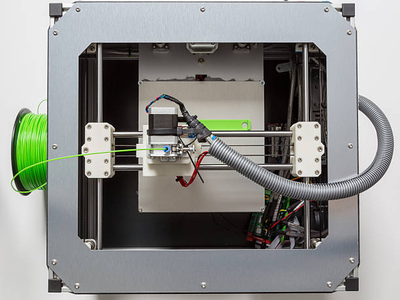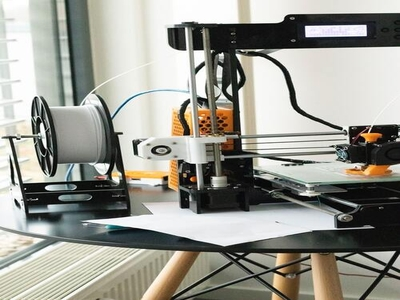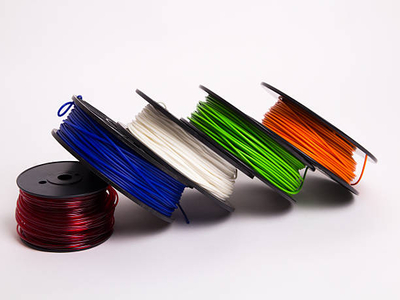What is TPU filament?
TPU filament, or Thermoplastic Polyurethane, is a flexible, elastic-rich, and abrasion-resistant thermoplastic that’s durable and long-lasting. It’s used in many manufacturing processes.
Because TPU filament can tolerate temperatures as high as 80°C or 175°F, it’s utilized for a variety of purposes for consumer and industrial applications.
In this guide, we’ll take a deep dive into TPU filament and the several advantages it has over other filaments.
what is tPU filament?

TPU filament is affordable, safe, and versatile.
Because it’s resistant to abrasions, oils, chemicals, and wear and tear, it’s ideal for use in a variety of industries including the automobile sector.
TPU components are also resilient to cold temperatures and therefore do not become brittle or difficult to handle when printed.
When compared to TPE, which is also a flexible filament, TPU is more readily printable and retains its elastic properties at lower temperatures better.
TPU filament, in comparison to TPE, has enhanced abrasion resistance and increased resistance to oils and greases.
TPU has good adhesion properties so that no curling or delamination occurs during the 3D printing process.
Check out this video on printing with TPU filament:
Elastic Properties
The hardness of TPU is determined by the ratio of polymers used.
Because TPU filament will flow at temperatures ranging from 220 to 250 degrees Fahrenheit, a heated build platform is not required.
The extruder mechanism, therefore, must be able to endure materials that are both flexible and compressible up to a constant temperature of 250 degrees Fahrenheit for prolonged periods.
NOTE: The temperature should not exceed 60 degrees Fahrenheit when it is utilized.
Flexibility
TPU’s flexibility is very good, but this is also determined by the free 3D printing software settings.
When you utilize a low level of infill, the printed design becomes more flexible, allowing you to make items with greater elasticity or brittleness.
However, TPU filament does require a lot more energy to be transferred than many other filaments when 3D printed.
Thankfully, there are no warping problems to worry about as a result of thermic shock in comparison to other materials.
Down points of TPU
While elasticity can be a good thing, the increased elasticity of TPU makes it somewhat quite difficult to print than other filament materials.
5 Effective Tips for 3D Printing With TPU Material
When it comes to using TPU filament to print, there are several factors to consider.
These include the advantages and disadvantages of TPU filament, and how you can make the most of this material.
When deciding whether or not to start with TPU material, remember to think about any potential 3D printing issues.
1. Optimize the feed rate

When 3D printing with flexible filaments, due to the material’s elasticity, a steady feed rate is typically preferable.
This steady feed rate reduces the risk of uncontrolled expansion if there are any big changes in print speed.
Increased print speeds can cause the filament to compress, causing a jam.
While finding the optimal print speed for TPU material may take several tries, a speed of 35 mm/s is a good place to start.
TPU is cheaper than ABS and provides a smoother feel, but it can only print at layer heights of 0.2mm or less.
To produce an item with TPU material, make sure you use lower layer heights (typically between 0.1 and 0 on the printer), to ensure they are in the range of 0.1 to 0.2 mm thick.
Because there is a need for less plastic at the lower layer height, lower layer heights take the strain off the filament feeder.
2. Use Negative Tolerance And Do not Use Rafts
If you’re trying to build a part that must fit on top of another item and is flexible, it is worth using a negative tolerance between the parts.
A negative tolerance will ensure that the flexible component can stretch freely over the other object with ease.
It is also critical not to use 3D print raft when using flexible filaments like TPU because the base layers of the rate have a greater rate of extrusion.
3. Optimize The Retraction Settings
Because TPU is flexible and elastic, it is susceptible to rapid motions like retractions.
As a result, you must tailor the retraction settings to minimize any shaking from the extruder to 3D print successfully with TPU plastic.
To avoid possible oozing from the extruder, start with a small amount of retraction and work your way up as needed.
4. Shorten The Distance
The majority of experts believe that 3D printing flexible materials with a Direct Drive extruder are the way to go.
On the other hand, you may obtain comparable results when using the proper settings on a 3D printer with a Bowden extruder.
Regardless, it is critical for there to be tight tolerances in the route that the filament takes to the melt zone. This can prevent kinking and coiling.
5. Placement Of The Spool
A few modifications to the material’s spool can make a significant difference.
The extruder drive wheel typically draws the filament into the nozzle, which causes some plastic on the spool to unwind.
However, as TPU is flexible, the filament will be stretched when it is pulled and may result in under-extrusion.
As a result, install the spool above the printer so that it unwinds downward and reduces any resistance.
Read our related article on TPE vs TPU Filament. We put these filaments head-to-head to see which is the best flexible filament!
Industries that use TPU material in 3D Printing

TPU 3D printing is widely utilized in a variety of sectors because it delivers numerous benefits.
Sporting goods and footwear
Because TPU is flexible and durable, it’s an excellent material for sports and leisure use and can be found in a variety of sporting goods, training equipment, water devices, and fitness equipment.
Tractus3D, an industrial 3D manufacturer, has collaborated on a 3D printing project for shoes by SLEM, an innovation and education center for the footwear business.
Shoes created using these techniques are particularly good at tailoring sole designs to the needs of customers.
Aerospace
3D printing in the aerospace sector has also grown considerably, with companies like Airbus and Boeing recognizing exactly what it has to offer.
More specifically, 3D printing is being used in instrument panels and sensors.
Automotive
TPU has also become extremely popular in the automobile sector since it was first used.
The use of TPU has grown dramatically in recent years. As a result, it can be found in instrument panels, sensors, and switches, among other places.
Conclusion
What is TPU filament?
It’s one of the most flexible and durable filaments on the market and has been used in many different industries due to its many advantages.
Using TPU filament can be a little tricky, but with our 5 simple tips, you will be printing whatever you want to in no time.